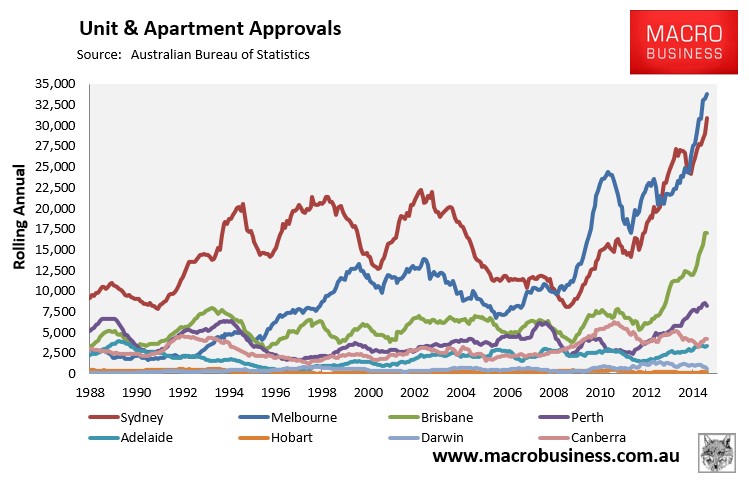In late May, ABC’s 7.30 Report ran a segment on the cheap combustible cladding that has covered potentially thousands of buildings across Australia, that last November sent a Docklands building into a towering inferno:
LEIGH SALES, PRESENTER: When a cigarette was left on a balcony table in Melbourne’s Docklands precinct last year, it took fewer than 15 minutes for 13 storeys to go up in flames. The problem was the cheap cladding that covered the entire apartment building. It didn’t meet Australian standards and should never have been used. But since that fire, it’s emerged that potentially thousands of buildings in Australia could be covered with the same material…
MICHAEL O’CONNOR, CONSTRUCTION, FORESTRY, MINING & ENERGY UNION: This product is rife. It’s used in buildings throughout Australia. All the information we’re receiving, Brisbane, Perth, Melbourne, every capital city, we believe this product is used in many buildings and particularly in high rise buildings…
Then in June, Engineers Australia released a report claiming that 85% of strata units built in New South Wales were defective on completion, and arguing that a major fire in a Sydney high-rise is inevitable.
Yesterday, ABC News noted a report from the University of New South Wales, which confirmed that 85% of apartment buildings built since 2000 in New South Wales were defective, with common problems including shifting foundations, water leaks, wall cracks and tiling faults.
Australia’s new found fondness for high-rise apartments has been touted as not only a solution for housing affordability, but also as a way to save the environment by reducing sprawl, as well as saving the economy by filling the construction void as the mining investment boom unwinds.
Across the east coast capitals, in particular, apartments have sprung-up like wildfire, as illustrated in the next chart:

But rather than building world-class homes suitable for families, instead we have built are a bunch of ugly, expensive, and shoddily built high-rise projects, whereby $400,000-plus doesn’t just buy you a tiny shoebox in the sky, but also potentially your own private crematorium.
At least it will add to GDP, given the cost of repairing/rebuilding these projects [/sarc].

